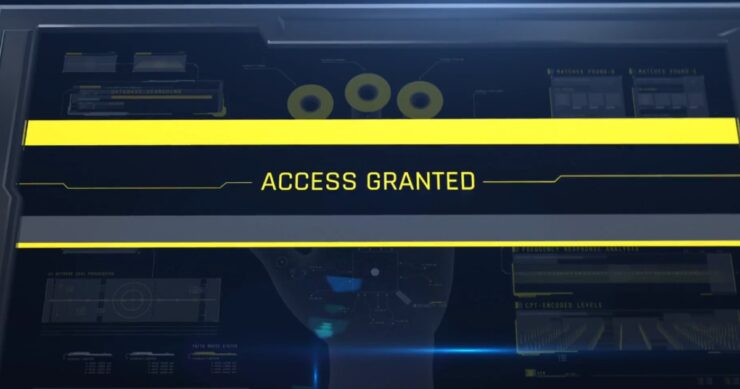Just-In-Time (JIT) Access is a security approach used primarily in computing and network environments. Its fundamental principle is granting temporary access to resources or systems, only when needed and for the shortest time necessary.
This method contrasts with traditional models where users often have permanent or long-standing permissions, which can pose significant security risks.
The core idea behind JIT is to minimize the attack surface. By reducing the time and scope of access, the opportunities for unauthorized users to exploit permissions are significantly lowered. This strategy is particularly vital in environments with high-security requirements, such as financial institutions, government systems, or healthcare databases.
JIT in Modern Security Landscape
The modern digital landscape presents numerous security challenges. Cyber threats have become more sophisticated, and attackers continuously develop new methods to exploit system vulnerabilities. In such a scenario, conventional security practices are often inadequate.
Permanent privileges, even for high-ranking personnel in an organization, can be a liability. If an attacker compromises a user account with extensive permissions, the damage can be catastrophic. Just-in-time helps mitigate this risk by ensuring that elevated privileges are only available when absolutely necessary and then revoked immediately after the task is completed.
Implementing JIT Access

Implementing JIT requires careful planning and a robust security infrastructure. The first step is to identify roles and scenarios where just-in-time can be applied. For instance, system administrators might only need elevated privileges when performing specific maintenance tasks. Learn more about Just-In-Time implementation at https://www.entitle.io/just-in-time-access.
Once the roles and scenarios are identified, organizations must deploy tools and systems to manage JIT. These tools often include identity and access management solutions that support dynamic control. They ensure that when a user requests elevated access, the system evaluates the request based on predefined policies and grants the privileges if the criteria are met.
Compliance Standards
Just-in-time not only enhances security but also helps organizations comply with various regulatory standards. Many regulations mandate strict control over access to sensitive information. By implementing JIT, organizations can demonstrate that they are taking proactive steps to limit access to sensitive data, thereby adhering to compliance requirements.
In sectors like banking, healthcare, and public services, where data security and privacy are paramount, JIT access becomes an essential element of the compliance strategy. It allows organizations to show auditors and regulatory bodies that they have effective controls in place to minimize unauthorized entry.
Challenges and Considerations
While just-in-time offers significant benefits, implementing it can be challenging. One of the main challenges is striking a balance between security and usability. If the JIT system is too restrictive or cumbersome, it can hinder productivity. Users may find themselves frequently waiting for entry approvals, which can disrupt workflow and lead to frustration.
To address this, organizations must fine-tune their just-in-time policies. They need to ensure that the system is responsive and that legitimate access requests are processed swiftly. Additionally, they must provide clear guidelines and training to users to help them understand the JIT process and the reasons behind it.
The Future of JIT Access

As the digital landscape continues to evolve, just-in-time will likely become more prevalent. Its ability to provide dynamic, context-sensitive security makes it an attractive option for organizations looking to bolster their defenses against an increasingly sophisticated array of cyber threats.
Future advancements in machine learning and artificial intelligence could further enhance JIT systems. These technologies could enable more nuanced and automated decision-making processes, allowing for even more precise control of access based on real-time analysis of security risks.
Enhancing Security with JIT Access
Enhancing security is a primary goal of JIT access. In an era where data breaches and cyber-attacks are commonplace, securing sensitive information and critical systems is paramount. Just-in-time access plays a crucial role in this regard by ensuring that users have only the necessary privileges at the right time.
Organizations can enhance their security posture significantly through JIT by reducing the likelihood of privilege abuse. Since entry rights are granted temporarily, the window for potential misuse is significantly narrowed. This approach is particularly effective against threats like insider attacks or situations where a user’s credentials are compromised.
Furthermore, just-in-time helps in creating a more manageable and trackable access environment. Since entry is granted on a case-by-case basis, it’s easier to monitor and audit who had access to what, and when. This enhanced monitoring capability is crucial for detecting potential security breaches and responding promptly.
Integrating JIT with Other Security Measures
While just-in-time is powerful, it’s most effective when integrated with other security measures. Combining JIT with technologies like multi-factor authentication (MFA), encryption, and continuous monitoring creates a more robust security framework.
MFA adds an extra layer of security by requiring additional verification before access is granted. This step is especially important when granting elevated privileges, as it reduces the risk of unauthorized entry due to stolen credentials.
Encryption ensures that even if data is accessed, it remains unintelligible without the proper decryption keys. This layer of security is vital in protecting sensitive information, especially in scenarios where just-in-time is used to grant entry to critical data.
Continuous monitoring is essential for detecting and responding to unusual access patterns or potential security incidents. By integrating JIT with real-time monitoring tools, organizations can quickly identify and address security issues, further reducing the risk of data breaches.
Best Practices for JIT Access Management

To maximize the benefits of just-in-time access, organizations should follow certain best practices. These include:
- Clearly defining the criteria for granting JIT entry. This involves identifying which roles require elevated privileges and under what circumstances they should be granted.
- Regularly reviewing and updating policies. As organizational needs and the security landscape change, just-in-time policies should be revisited and adjusted accordingly.
- Providing comprehensive training to users. Educating users about the importance of JIT access and how to use it effectively is crucial for its success.
- Implementing robust auditing and reporting mechanisms. Keeping detailed logs of access activities is essential for compliance and for investigating security incidents.
- Regularly testing and refining the just-in-time system. Continuous improvement is key to ensuring that the JIT entry system remains effective and user-friendly.
Summary
In conclusion, Just-In-Time access is more than just a security measure; it’s a paradigm shift in how organizations approach access management. By granting access only when necessary, JIT significantly reduces the attack surface, making it harder for attackers to exploit user privileges.











